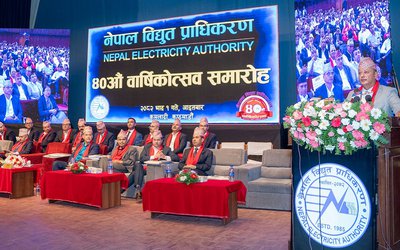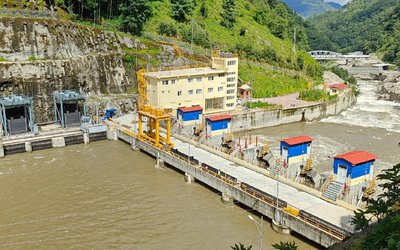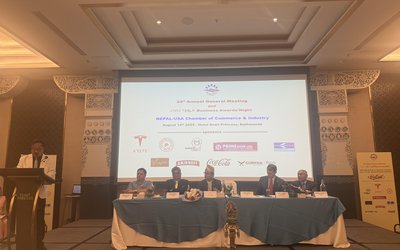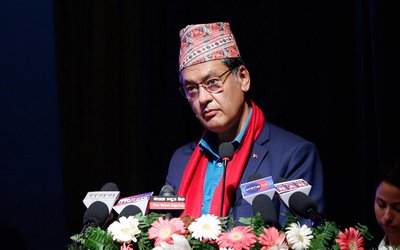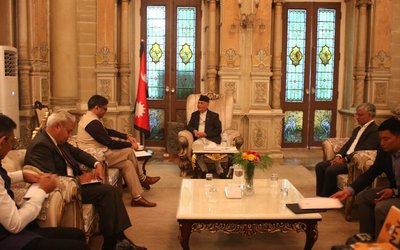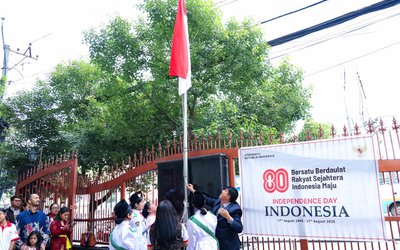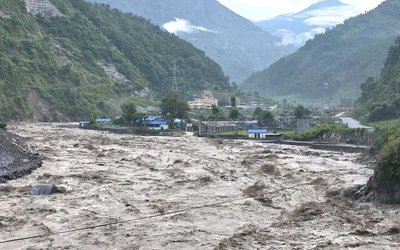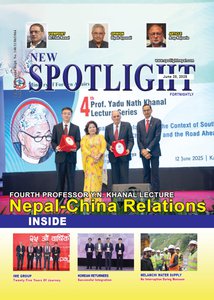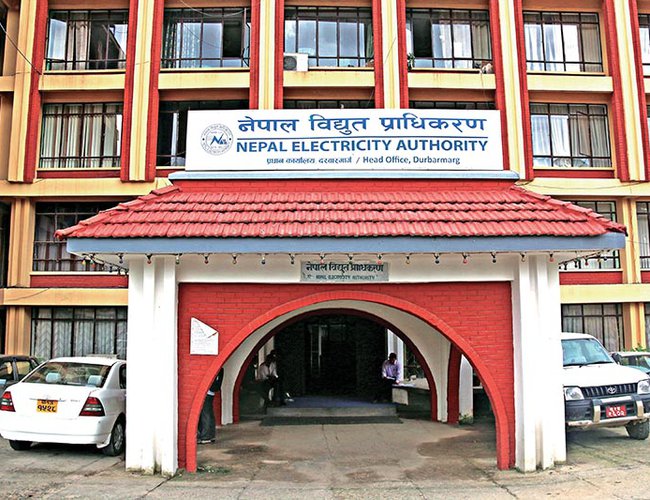
The profit of the Nepal Electricity Authority (NEA) has decreased by Rs 5.395 billion.
During the four-month tenure of Hitendra Dev Shakya as Executive Director, appointed by Energy Minister Deepak Khadka, the NEA’s profit dropped by 37.32% compared to the previous year.
According to the annual report published by the Authority today, the main reasons for the decline in profit are attributed to an increase in foreign currency exchange rates and an increase in provisions for ‘unrealizable receivables’.
The decrease in profit was caused by the increased exchange rates of foreign currencies like the US Dollar, which the NEA needs to pay back its foreign loans, and also due to provisions set aside for unpaid trunk and dedicated line dues.
However, according to the global economy, the exchange rate of the US Dollar only increased by 2.99% compared to the previous year.
Last year, the Authority had earned a pre-tax profit of Rs 13.3 billion. This year, that profit has shrunk to Rs 9.06 billion. Two years ago, the profit had increased by Rs 1.23 billion, which was a 10.19% growth. In contrast, during Hitendra Dev’s four-month term, the profit has declined by 37.32%, as mentioned in the Authority’s annual report.
Besides these factors, the NEA also attributed the decline in profit to increased administrative costs resulting from the handover of rural units.
According to the Office of the Auditor General, the Authority still has Rs 22.8 billion in outstanding dues for trunk and dedicated lines. While trying to recover these dues, Energy Minister Deepak Khadka, under the final agreement from Nepali Congress leader Arzu Rana, recommended the removal of then Executive Director Kulman Ghising to the Cabinet. As per Khadka’s recommendation, Prime Minister KP Oli dismissed Ghising on Chaitra 11 (March 24).
On Chaitra 12 (March 25), Khadka appointed Hitendra Dev Shakya as the new Executive Director of the Authority. The profit declined within approximately four months of the fiscal year ending mid-July (Asar end).
According to NEA sources, the main reason for this sharp decline of over Rs 5 billion in just four months after Shakya’s appointment was an increase in system losses. Although the Authority claimed a 0.5% reduction in losses compared to the previous year, actual losses increased by 1.17%.
During Kulman Ghising’s tenure, system losses were at 9.59%. Before publishing the current annual report, NEA's losses had risen to 10.76%. When including losses attributed to street lighting and both technical and non-technical (theft) losses, the total figure was shown to be 12.26%.
प्राधिकरणले गत आर्थिक वर्ष २०८१ /८२ मा करअघिको विवरणमा ९ अर्ब ७ करोड रुपैयाँ मात्रा नाफा कमाएको छ।
In fiscal year 2080/81 (2023/24), the Nepal Electricity Authority (NEA) earned a pre-tax profit of Rs 14.47 billion.
According to the data published by the Authority on Sunday, this is a 37.31% decrease compared to the previous year.
After tax, the Authority earned a net profit of Rs 10.53 billion in fiscal year 2080/81. In fiscal year 2072/73 (2015/16), the Authority had incurred a net loss of Rs 8.89 billion in a single year, but it has been consistently profitable since then.
The Authority’s total assets increased by 6.2% compared to the previous fiscal year, reaching Rs 684.91 billion in fiscal year 2081/82 (2024/25).
Excluding government grants, streetlight subsidies, and trunk line arrears, the Authority's average collection period stood at 45.84 days.
In fiscal year 2081/82, the Authority provided around 176.711 million units of electricity free of cost to approximately 2,073,514 customers with up to 5-ampere capacity.
The average selling price per unit of electricity was Rs 9.44. In the previous fiscal year, NEA collected Rs 27.44 billion through online payments. This amount saw a significant increase, reaching Rs 34.33 billion in the review year (2081/82).
- Electricity Consumption Increased by 10.7% in the Last Fiscal Year, Per Capita Consumption Reached 465 Units
- Aug 17, 2025
- Global IME Bank and Shangrila Development Bank Sign Memorandum of Understanding
- Aug 17, 2025
- Zaap EV Announces its Launch in Kathmandu
- Aug 17, 2025
- Foreign Secretary of India Misri Calls On PM Oli, President Paudel And Other Leaders
- Aug 17, 2025
- Flag Hoisting Ceremony Marks 80th Anniversary Of Indonesian Independence In Nepal, Honorary Consul Dhakal Highlights Growing Bilateral Ties
- Aug 17, 2025
